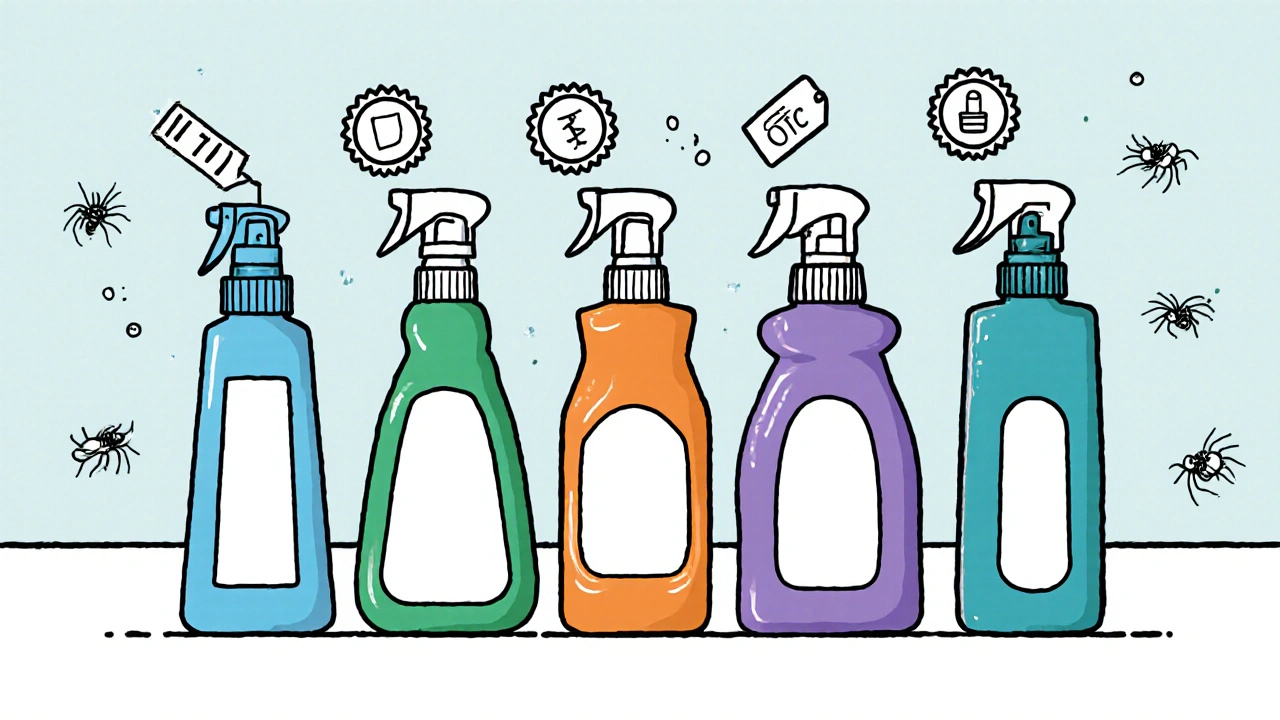A detailed comparison of Rhinocort (budesonide) with top nasal spray alternatives, covering efficacy, cost, side effects, and best-use scenarios.
Budesonide Nasal Spray – What You Need to Know
When working with Budesonide nasal spray, a prescription‑strength corticosteroid formulated for intranasal use that reduces inflammation and eases breathing. Also known as Budesonide spray, it’s designed to treat conditions like allergic rhinitis and chronic nasal congestion. budesonide nasal spray delivers medication directly to the nasal lining, which means faster relief compared to oral pills.
One of the main reasons people reach for this spray is allergic rhinitis, an immune response causing sneezing, runny nose, and itchy eyes when allergens irritate the nasal passages. The spray’s anti‑inflammatory action targets the underlying swelling, so you experience fewer symptoms throughout the day. Pairing the spray with allergen avoidance strategies—like using air purifiers or keeping windows closed during high pollen counts—boosts results. In practice, many patients report that the combination of a targeted steroid spray and lifestyle tweaks cuts their reliance on oral antihistamines.
Because budesonide belongs to the corticosteroid family, it shares some core attributes with other steroid medications: it suppresses immune activity, reduces mucus production, and stabilizes cell membranes in the nasal lining. Unlike systemic steroids, the intranasal route limits absorption into the bloodstream, which keeps side effects to a minimum for most users. However, the spray still requires proper technique—tilting the head forward, inserting the nozzle gently, and inhaling while spraying—to ensure the medication coats the mucosa evenly.
How to Use Budesonide Nasal Spray Correctly
First, prime the pump by spraying a couple of times into the air if you’re using a new bottle. Next, blow your nose gently to clear excess mucus; this prepares the passage for better drug contact. Insert the tip into one nostril, close the opposite nostril with a finger, and aim the spray toward the outer side of the nasal wall—not straight up—to avoid draining into the throat. While inhaling gently, press the actuator once, then repeat on the other side. After each use, wipe the tip with a clean tissue and replace the cap. Following this routine every day—usually one or two sprays per nostril—maintains steady symptom control and reduces the chance of local irritation.
Even with correct use, some users notice mild side effects. The most common are nasal dryness, mild bleeding, or an itchy sensation that usually fades after a few weeks. If you experience persistent irritation, try a saline rinse before applying the spray to keep the lining moist. For those concerned about long‑term safety, studies show that low‑dose intranasal steroids like budesonide have a favorable safety profile when used as directed, but regular check‑ins with your healthcare provider are wise, especially if you plan to use it for more than a few months.
Another related entity worth mentioning is nasal congestion, the feeling of a blocked or stuffy nose caused by swollen blood vessels and excess mucus. Budesonide nasal spray helps clear congestion by shrinking inflamed tissues, which improves airflow and reduces the need for decongestant pills that can raise blood pressure. In many cases, patients combine the spray with a short‑term saline rinse to flush out allergens and mucus, achieving quicker relief without over‑relying on medication.
When evaluating whether budesonide nasal spray is right for you, consider the broader treatment landscape. Options include antihistamine tablets, leukotriene modifiers, and immunotherapy shots. Each has its niche: antihistamines are fast‑acting for itchy eyes, leukotriene blockers help with asthma‑related nasal symptoms, and immunotherapy targets the root cause of allergies. Budesonide sits in the middle, offering consistent control of inflammation while you work on other strategies. Discussing these alternatives with a pharmacist or doctor helps you build a personalized plan that tackles both immediate symptoms and long‑term triggers.
Below you’ll find a collection of detailed articles that dive deeper into each of these points—how to choose the right dosage, compare budesonide with other nasal steroids, manage side effects, and more. Browse the list to get practical tips, expert comparisons, and real‑world experiences that can guide your decision and make the most of your treatment.
